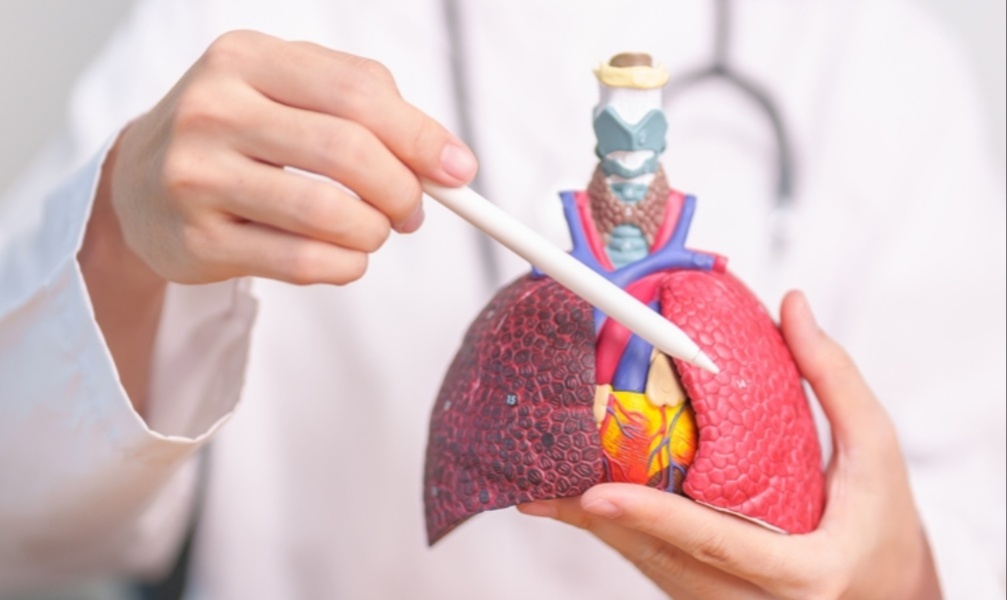Chronic Obstructive Pulmonary Disease (COPD) is a progressive lung disease that makes breathing difficult by obstructing airflow. COPD is a term encompassing both emphysema and chronic bronchitis, and it primarily affects older adults, often those with a history of smoking. Understanding the symptoms, causes, and treatment options for COPD is essential for managing the disease and improving quality of life.

To learn more about COPD, you can visit Mayo Clinic’s overview on COPD.
COPD Symptoms & Relief
The symptoms of COPD often develop slowly and worsen over time, making early diagnosis challenging. Recognizing these signs can lead to earlier intervention and better symptom management. Common symptoms of COPD include:
- Shortness of Breath: Difficulty breathing, especially during physical activity, is one of the earliest signs of COPD. As the disease progresses, breathing can become labored even at rest.
- Chronic Cough: A persistent cough that produces mucus is common in people with COPD, especially among those with a history of smoking.
- Frequent Respiratory Infections: People with COPD are more susceptible to colds, flu, and pneumonia due to weakened lung function.
- Wheezing and Chest Tightness: Many individuals with COPD experience wheezing, which can be accompanied by a feeling of tightness in the chest.
- Fatigue: Chronic shortness of breath and low oxygen levels can lead to fatigue, making it challenging to perform everyday tasks.
For a more detailed list of COPD symptoms, visit the American Lung Association’s guide to COPD symptoms and diagnosis.
Causes of COPD
COPD is primarily caused by long-term exposure to lung irritants. Smoking is the most common cause, as the chemicals in cigarettes damage lung tissue over time. However, non-smokers can also develop COPD due to other factors, such as:
- Environmental Factors: Prolonged exposure to dust, fumes, and air pollution can lead to lung damage and increase the risk of COPD.
- Genetic Factors: Some people have a genetic predisposition to COPD due to a deficiency in the protein alpha-1 antitrypsin, which helps protect the lungs.
- Secondhand Smoke: Exposure to secondhand smoke can increase the likelihood of developing COPD, especially in people with a genetic susceptibility.
For a comprehensive look at COPD causes, Cleveland Clinic offers an informative guide on the contributing factors.
Manage COPD Effectively
Effective COPD management involves a combination of lifestyle changes, medication, and medical interventions that work together to slow the progression of the disease and improve daily life. Here are some strategies to help manage COPD symptoms:
- Quit Smoking: For smokers, quitting smoking is the most crucial step in managing COPD and preventing further lung damage.
- Avoid Triggers: Reduce exposure to pollutants, dust, and chemicals that can irritate the lungs and worsen symptoms.
- Practice Breathing Exercises: Techniques such as pursed-lip breathing and diaphragmatic breathing can help improve lung efficiency and reduce breathlessness.
For more management strategies, WHO’s fact sheet on COPD provides additional tips on managing COPD through lifestyle adjustments.
COPD Treatment Options
COPD treatment options are designed to relieve symptoms, prevent complications, and improve overall lung function. Here are some of the primary treatment approaches:
- Medications: Common COPD medications include bronchodilators, corticosteroids, and combination inhalers, which help open the airways, reduce inflammation, and make breathing easier.
- Oxygen Therapy: For individuals with advanced COPD, supplemental oxygen can increase oxygen levels in the blood, reducing breathlessness and improving energy.
- Pulmonary Rehabilitation: This program includes exercise, nutrition, and counseling to help improve lung health, strength, and quality of life.
- Surgery: In severe cases, surgical options like lung volume reduction surgery or a lung transplant may be considered for patients who do not respond to other treatments.
For further information on COPD treatment, check out the Mayo Clinic’s guide to emphysema and COPD.
Understanding COPD Relief
Although COPD is a chronic condition, symptom relief is possible through a combination of treatments and lifestyle adjustments. Techniques like pulmonary rehabilitation, regular physical activity, and dietary changes can all contribute to better lung function and improved well-being. Some individuals find relief through alternative therapies such as acupuncture and herbal supplements, although these should be discussed with a healthcare provider to avoid interactions with medications.
For additional information on managing COPD symptoms, American Lung Association offers comprehensive resources on COPD care and symptom relief.
Find Effective Ways to Manage COPD Symptoms and Enhance Your Well-Being
Living with COPD requires ongoing effort, but effective management strategies can significantly enhance quality of life. Regular check-ups with a healthcare provider, adherence to prescribed treatments, and participation in pulmonary rehabilitation programs can make a positive impact. By working closely with healthcare professionals and making lifestyle adjustments, people with COPD can experience improved comfort and increased energy.
To learn more about effective treatment strategies and how they can improve your well-being, Mayo Clinic and Cleveland Clinic provide resources and guidance for COPD management.



